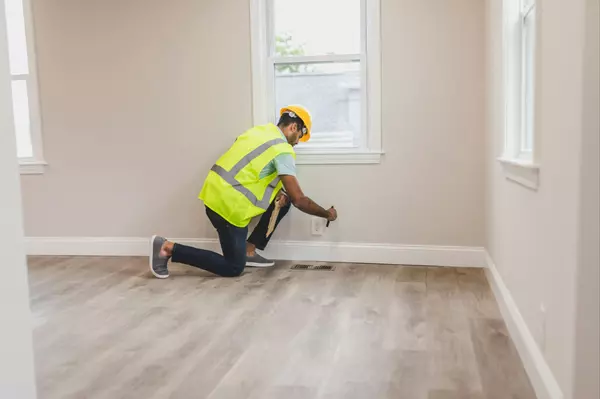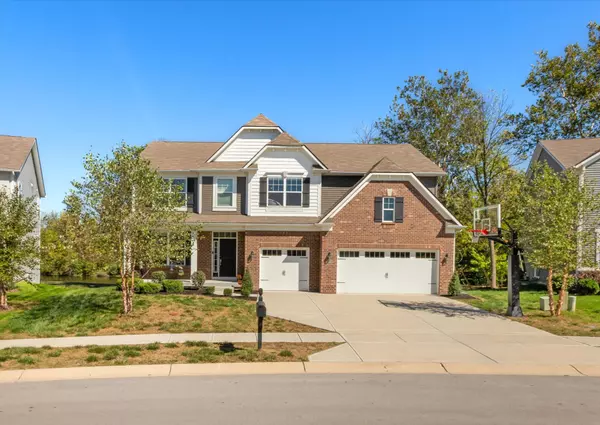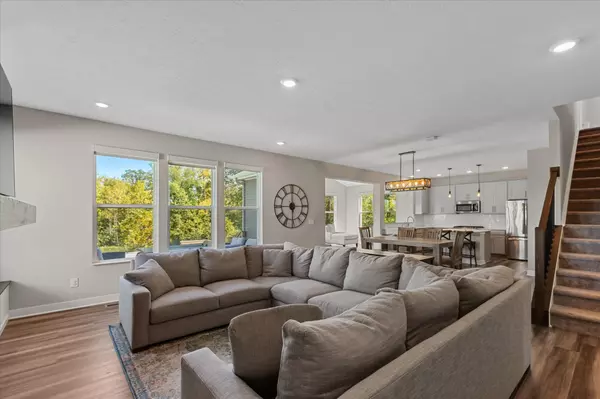
House Hunting 101: Touring Homes with a Purpose
Setting Goals for Each Tour When embarking on your house hunting journey, it’s easy to get caught up in the excitement of exploring potential new homes. However, without clear goals for each tour, you might overlook critical details or waste time on homes that aren’t the right fit. Defining specific priorities and questions before each visit can help streamline the process and lead to a more informed decision. Ask yourself: What is most important to me in a home? Do I need a certain number of bedrooms, proximity to schools, or a yard for pets? By identifying these must-haves ahead of time, you can focus on properties that align with your lifestyle and avoid distractions during the tour. Crafting a Pre-Tour Checklist Consider creating a checklist to guide your tour. Include questions like: Does the layout match my daily needs? Are there any signs of wear or damage? Is the neighborhood quiet and safe? Having a roadmap ensures you cover all bases and can compare homes objectively. What to Look for Beyond the Aesthetics It’s easy to be captivated by a home’s beautiful staging or trendy decor, but remember: aesthetics can be changed, while structural integrity and functionality are much harder to fix. Focus your attention on the bones of the house and critical features that impact its value and livability. Key Areas to Assess Look beyond the surface and evaluate: Signs of Good Maintenance: Check for well-maintained systems like HVAC, plumbing, and electrical. Structural Issues: Be wary of cracks in walls, uneven floors, or doors that don’t close properly. Layout Functionality: Does the home flow well, or will daily activities feel cumbersome? These factors often provide more insight into a home’s long-term suitability than cosmetic details. Identifying Red Flags Keep an eye out for warning signs such as water stains, a strong smell of mold, or evidence of pest infestations. These issues could indicate costly repairs or hidden problems that diminish the home’s value. Taking Notes and Photos Touring multiple homes can quickly become overwhelming, and details tend to blur together after a few visits. Staying organized is crucial to ensure you remember the pros and cons of each property. Notes and photos are your best tools for keeping everything straight. How to Document Each Tour Bring a notebook or use a note-taking app to jot down: Initial impressions of the home and neighborhood Specific features you liked or disliked Questions that arose during the tour Additionally, take photos or short videos (with permission) of critical areas. This visual reference will be invaluable when it’s time to compare options or revisit potential candidates. Avoiding Common Pitfalls House hunting can be an emotional experience, but allowing feelings to overshadow practical considerations can lead to regret. Avoid these common mistakes to stay on track: Falling in Love Too Soon It’s tempting to fall head over heels for a home that has your dream kitchen or a stunning view. But remember, no property is perfect. Stay objective and ensure the home meets your needs and budget before committing. Ignoring Practical Issues Overlooking flaws like poor insulation, an inconvenient location, or insufficient storage can lead to long-term dissatisfaction. Be realistic about what you can and can’t compromise on, and weigh each property’s strengths and weaknesses carefully. The Importance of a Balanced Approach While it’s important to connect emotionally with your future home, striking a balance between heart and head ensures you make a decision you’ll be happy with for years to come.

How to Find Your Dream Home
Buying a home is one of life’s most exciting milestones, but it’s also a complex process that demands clear priorities. Defining what you need in your dream home versus what you simply want can help you focus on the right options without wasting time or emotional energy. This comprehensive guide will walk you through the critical aspects of prioritizing your homebuying needs, balancing dreams with reality, and preparing for your future. Needs vs. Wants: Defining Priorities One of the first steps in the homebuying journey is creating a clear distinction between needs and wants. While it might seem straightforward, many buyers struggle to categorize features accurately, which can complicate decision-making later on. Identifying Essential Needs Needs are non-negotiable elements that directly affect your daily life. These essentials ensure that a home fulfills its primary purpose of comfort, safety, and accessibility. Examples of common needs include: Number of bedrooms and bathrooms: A sufficient amount of space to accommodate family members or guests. Proximity to work or schools: Reducing commute time can significantly impact quality of life. Neighborhood safety: Ensuring a secure environment is critical for peace of mind. Budget constraints: Staying within financial limits to avoid long-term stress. Spotting the Nice-to-Haves Wants, on the other hand, are features that enhance your living experience but aren’t deal-breakers. It’s essential to recognize them as extras to prevent them from overshadowing critical needs. Examples include: Luxuries like walk-in closets or a chef’s kitchen. A backyard pool for entertainment and relaxation. Advanced features like smart home technology. While these may make a home more appealing, overlooking needs for wants can lead to regret later. Location, Size, and Style: The Big Three When searching for a dream home, location, size, and style are three pillars that influence every other aspect of the decision. Each has a distinct impact on your lifestyle, budget, and long-term satisfaction. Why Location Matters The old adage, “location, location, location,” holds true for a reason. A home’s location affects: Commute times: Being close to work, schools, or family reduces daily stress. Amenities: Proximity to shopping, dining, and recreational activities enhances convenience. Resale value: Properties in desirable areas typically retain or increase their value over time. Choosing the right neighborhood involves weighing these factors against personal preferences and lifestyle needs. The Role of Size Size is another critical factor that determines how well a home will meet your immediate and future needs. Consider: How much space your family needs for comfortable living. The balance between living area, storage, and outdoor spaces. Future-proofing with room for growth or flexibility. Oversized homes might lead to unnecessary costs, while undersized ones can create limitations, so strike the right balance. Understanding Style Style encompasses both the architectural design of a home and the interior finishes. While it might feel like a secondary consideration, it plays a crucial role in reflecting your personality and preferences. Popular home styles include: Traditional and colonial designs for timeless appeal. Modern and minimalist layouts for sleek functionality. Rustic and farmhouse styles for cozy charm. Identify which style resonates with you to narrow your search effectively. Future-Proofing Your Choice While it’s easy to focus on immediate needs, long-term thinking is vital in homebuying. Future-proofing your choice ensures your investment remains practical and valuable over the years. Planning for Family Changes Think about how your life might evolve in the next 5–10 years. Will your family grow? Will children leave the nest? Ensure the home accommodates these changes without requiring major adjustments. Considering Market Trends Understanding local real estate trends can help you choose a home in an area likely to appreciate in value. Research planned developments or infrastructure projects in the area that could boost long-term value. Creating a Realistic Vision It’s tempting to envision the perfect home, but balancing dreams with practical realities is crucial. By setting clear goals and managing expectations, you can create a vision that aligns with both your desires and your means. Budgeting Wisely Know what you can afford before starting your search. Factor in additional costs like property taxes, maintenance, and homeowners’ insurance to ensure your budget is realistic. Working with a Realtor A skilled real estate agent can help refine your vision by identifying homes that meet your criteria and guiding you through tough decisions. Their expertise ensures you stay focused on what matters most. Defining your dream home starts with understanding your needs versus wants, focusing on the big three—location, size, and style—and future-proofing your choice for long-term satisfaction. By taking a realistic approach and leveraging expert guidance, you can find a home that perfectly balances your priorities with your vision.

Understanding Mortgage Pre-Approval: What It Is and Why It Matters
When you’re ready to buy a home, one of the first steps is understanding how much you can afford and ensuring you’re financially ready. This is where mortgage pre-approval comes in. Pre-approval is more than just a helpful step—it’s a critical tool that can save you time, money, and stress throughout the home-buying process. What Exactly Is Pre-Approval? Pre-approval is a formal process in which a lender evaluates your financial profile—your income, debts, assets, and credit score—to determine the exact amount they’re willing to lend you. Unlike a simple pre-qualification, pre-approval involves document verification and a detailed review of your financial standing. The result is a pre-approval letter, which serves as a formal commitment from the lender, contingent on final approval during underwriting. Pre-Approval vs. Pre-Qualification While both pre-qualification and pre-approval aim to estimate how much home you can afford, they differ significantly in terms of depth and reliability. Pre-qualification is a quick, informal assessment based on self-reported information, while pre-approval involves verifying your financial details and conducting a hard credit check. Here’s a breakdown: Pre-Qualification: Quick estimate based on basic information; no documentation required. Pre-Approval: Comprehensive review with documentation and a credit check; provides a more accurate borrowing limit. For buyers serious about entering the market, pre-approval is the gold standard, providing a competitive edge when making offers. Why Is Mortgage Pre-Approval So Important? Skipping pre-approval might seem tempting if you’re eager to start browsing listings, but doing so can lead to wasted time and disappointment. Here’s why pre-approval is crucial: It Defines Your Budget Imagine falling in love with a house only to discover later that it’s beyond your financial reach. Pre-approval helps prevent this heartbreak by giving you a clear budget range. For example, if you’re pre-approved for $400,000, you can confidently search for homes within or below that price range, focusing your efforts and avoiding unnecessary distractions. It Strengthens Your Offer In competitive real estate markets, pre-approval can be the difference between winning and losing a bid. Sellers are more likely to accept an offer from a pre-approved buyer because it demonstrates financial readiness and reduces the risk of the deal falling through. In fact, data from the National Association of Realtors shows that offers with pre-approval letters are significantly more successful in competitive bidding situations1. It Saves Time and Prevents Surprises Pre-approval also highlights potential financial issues early, giving you time to address them before making an offer. Whether it’s paying down debt or improving your credit score, tackling these challenges upfront ensures a smoother process down the road. The Step-by-Step Process to Getting Pre-Approved Getting pre-approved might sound complicated, but breaking it down into steps makes the process more manageable. Here’s what you can expect: Step 1: Gather Your Financial Documents Lenders will need proof of your financial situation to assess your eligibility. Commonly required documents include: Recent pay stubs (typically last two months). Tax returns and W-2s from the past two years. Bank statements for all accounts (checking, savings, investments). Documentation of other assets, such as property or stock holdings. Proof of any additional income sources. Organizing these documents in advance can expedite the process and make a positive impression on your lender. Step 2: Check Your Credit Score Your credit score plays a significant role in determining your eligibility and the interest rate you’ll qualify for. A higher score often leads to better terms, potentially saving you thousands of dollars over the life of the loan. You can check your score through free services or request a report from major bureaus like Experian, Equifax, and TransUnion. What’s a Good Credit Score for a Mortgage? Most lenders prefer scores of 620 or higher for conventional loans, but government-backed loans like FHA loans may accept scores as low as 580. Keep in mind that a score of 740 or above typically qualifies you for the best rates2. Step 3: Compare Lenders and Loan Options Not all lenders are the same. Shop around to find one that offers favorable terms and a reputation for excellent customer service. Key factors to consider include: Interest rates and fees. Loan products available (e.g., fixed-rate, adjustable-rate, FHA, VA). Customer reviews and responsiveness. Tools like Bankrate or NerdWallet can help you compare options side by side. Step 4: Submit Your Application Once you’ve chosen a lender, complete their application form and submit the required documents. Be prepared for a hard credit inquiry, which may cause a small dip in your score temporarily. The lender will review your information and issue a pre-approval letter if you meet their criteria. Choosing the Right Lender: Tips and Insights Finding the right lender is as important as finding the right home. Your lender will be your partner throughout the home-buying journey, so it’s crucial to choose wisely. What to Look for in a Lender When evaluating lenders, prioritize these qualities: Transparency: Clear explanations of terms, fees, and conditions. Flexibility: Willingness to tailor loan products to your needs. Communication: Availability to answer questions promptly. Real-Life Success Stories Many buyers find that working with the right lender transforms their experience. For example, a first-time buyer in Indiana saved over $10,000 in closing costs by choosing a lender that offered state-specific assistance programs3. The Bottom Line Mortgage pre-approval isn’t just a formality—it’s the foundation of a successful home-buying experience. From defining your budget to making your offer more competitive, this process is an essential step in turning your dream of homeownership into reality. By understanding the steps, choosing the right lender, and preparing thoroughly, you’ll set yourself up for success at every stage of your journey. Sources: National Association of Realtors MyFICO Bankrate
Categories
Recent Posts










